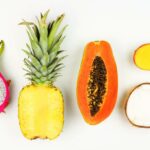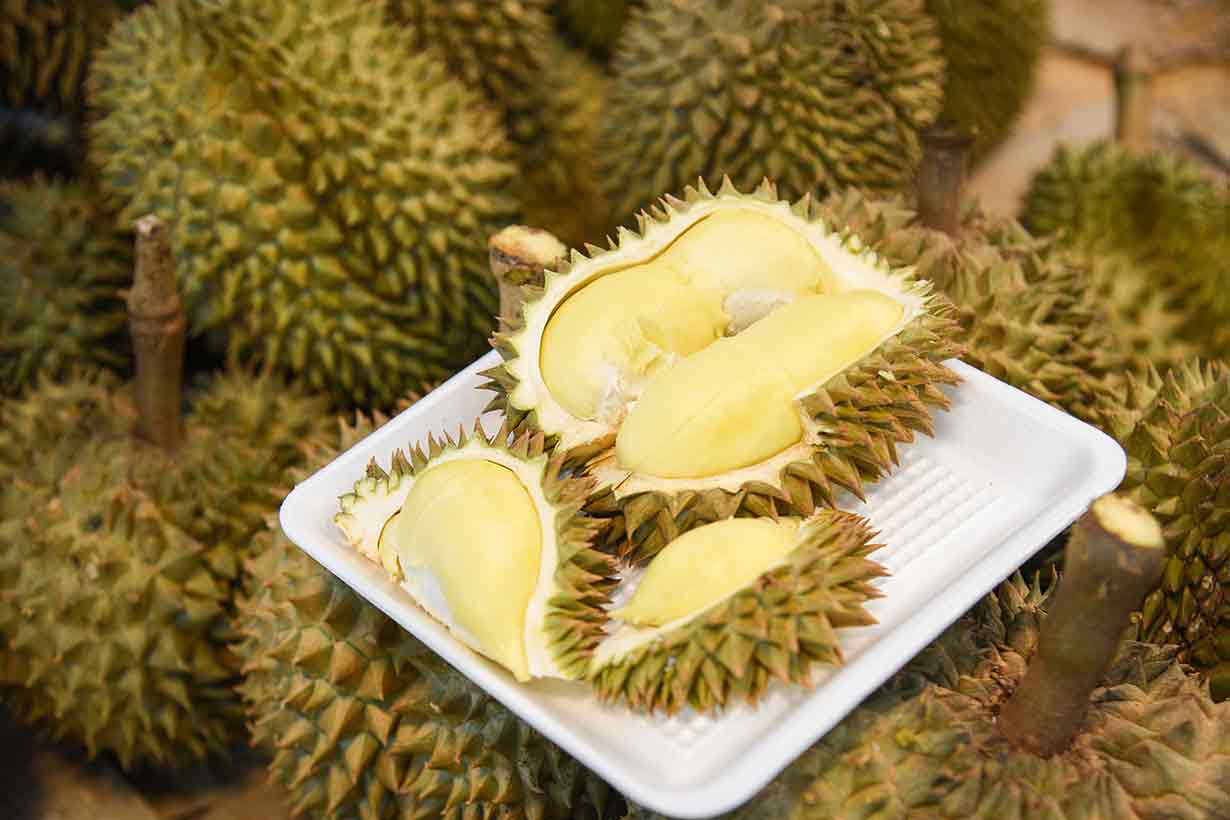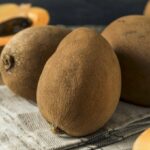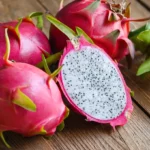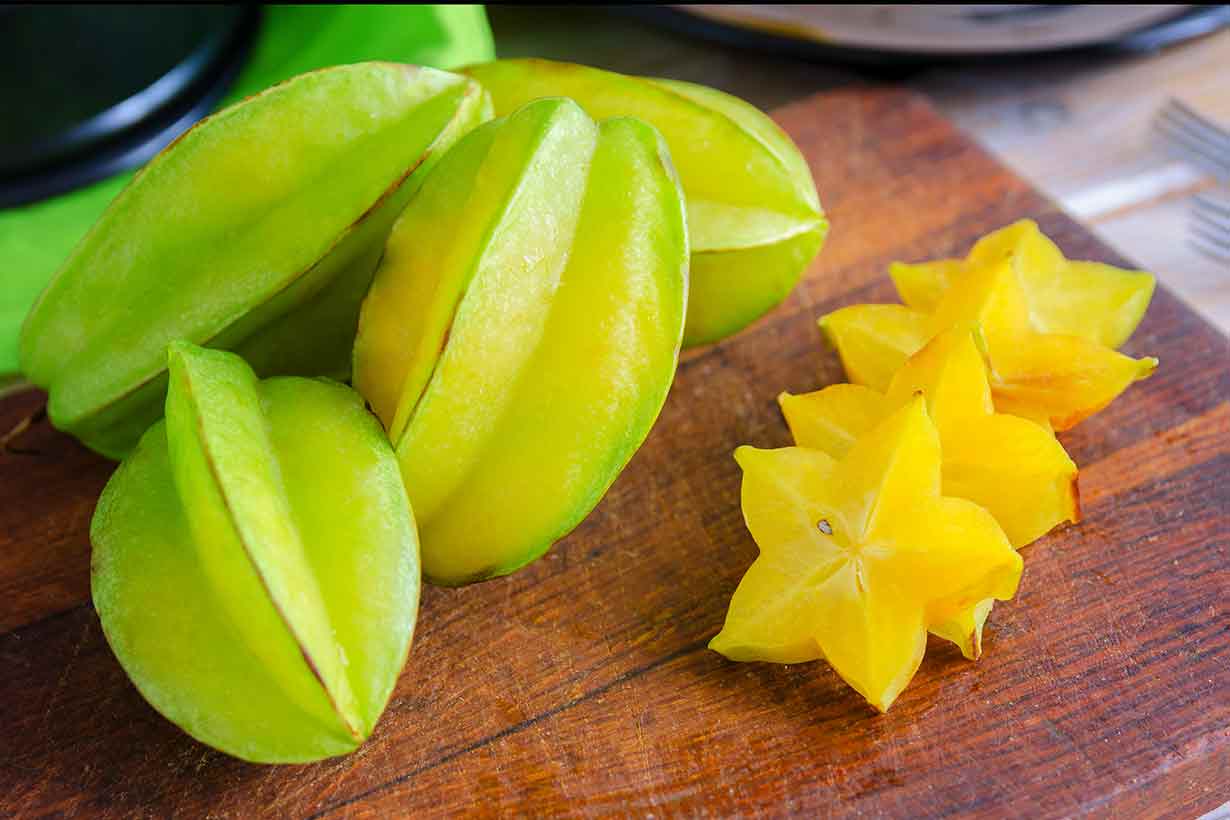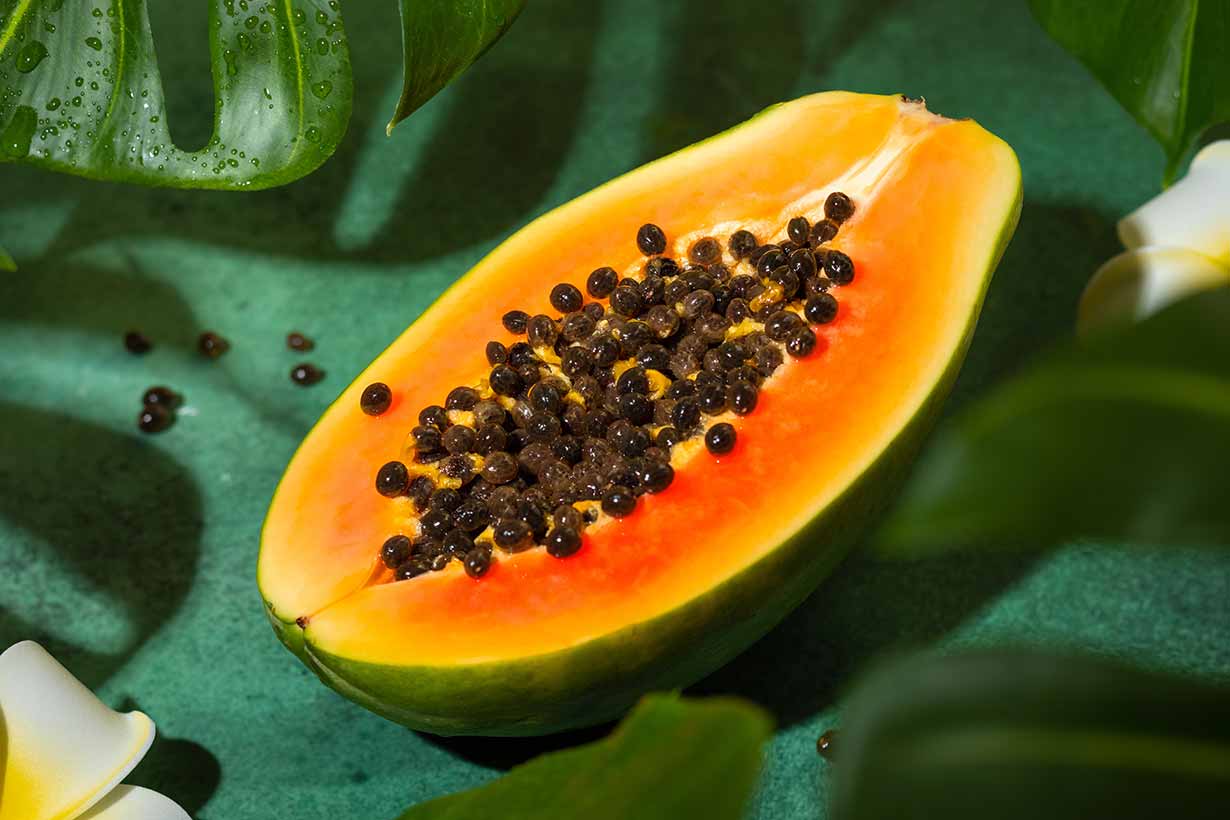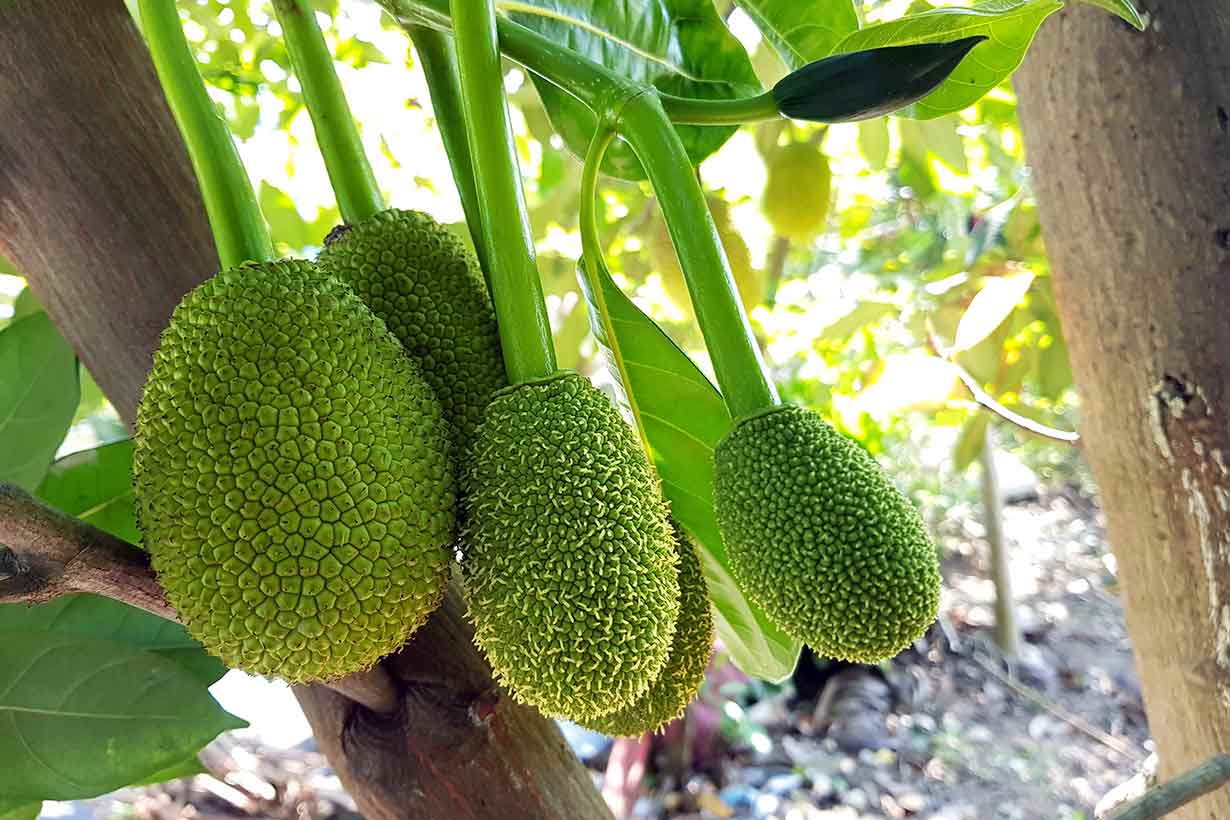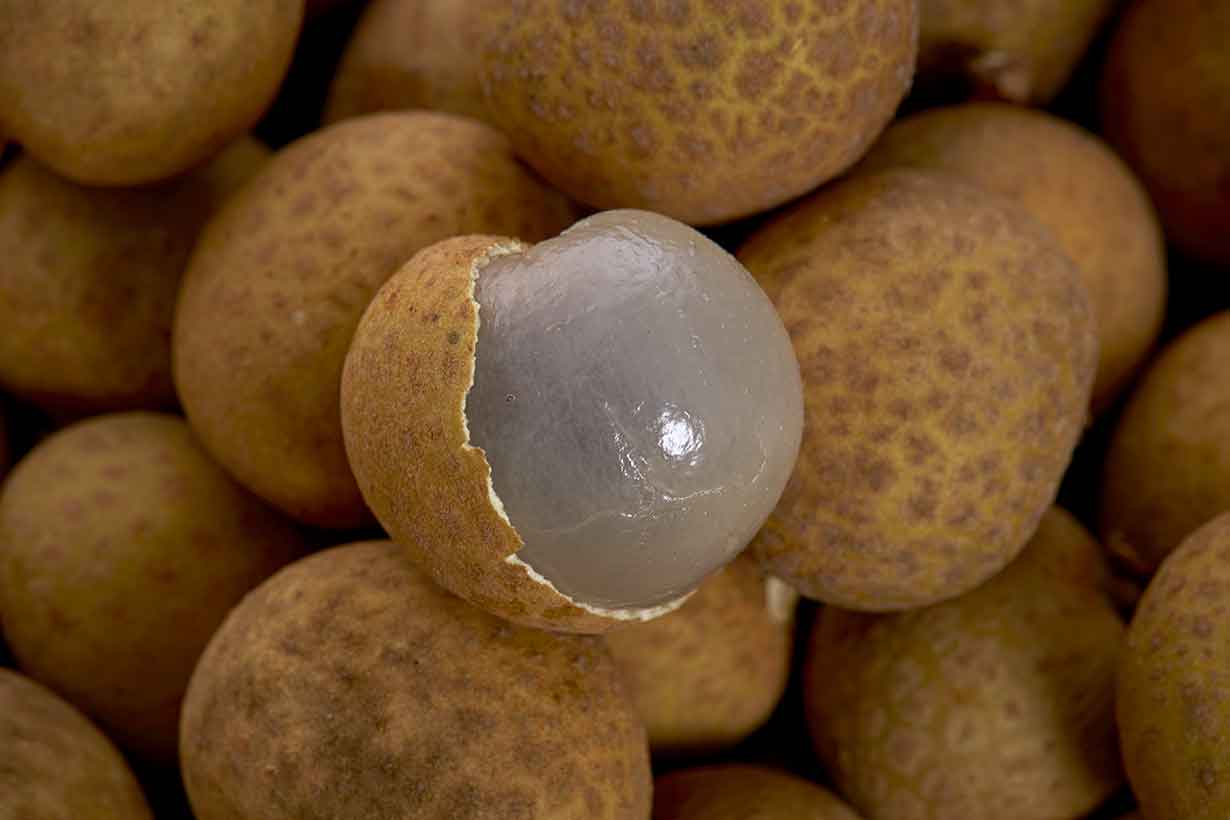Disclosure: This post may contain affiliate links. This means if you click on one of these links and purchase an item, we will receive a small commission at no extra cost to you. All opinions are our own.
Rambutan is an unusual-looking fruit from Southeast Asia.
Does it offer anything distinctly different in terms of nutritional composition from more common fruits?
This article provides a comprehensive guide to rambutan, covering its nutritional values, health benefits, potential drawbacks, and more.
What is Rambutan?
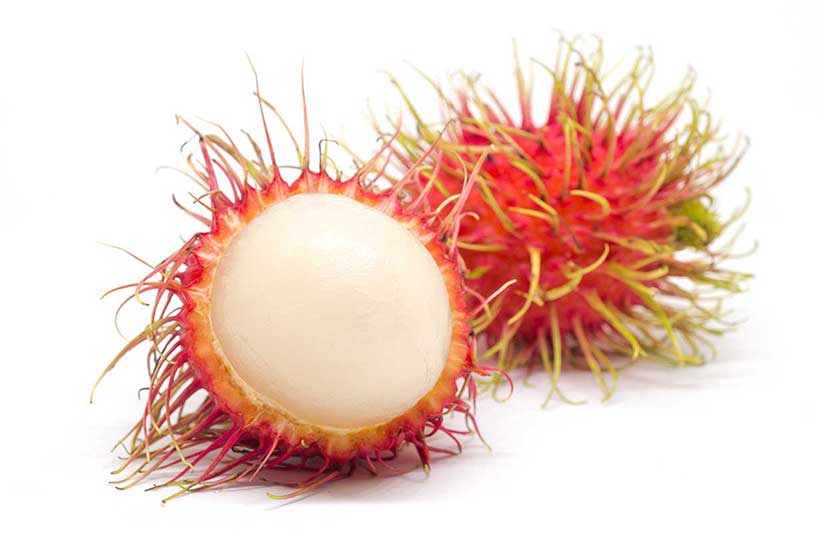
Rambutan is a small, round tropical fruit that is native to Indonesia, Malaysia, and other Southeast Asian regions. The image above illustrates the fruit’s appearance before and after opening.
As shown, the fruit is encased in a bright red skin adorned with tiny green hairs. It is interesting to note that the Malay word “rambutan” translates to “hair” in English (1).
Sometimes, the fruit is also referred to as “hairy lychee” due to its similarities to the lychee fruit (2).
Upon peeling the skin, the fruit’s inner flesh resembles a smooth, moist, cream-colored ball. To provide a visual comparison, it’ looks a little bit like’s somewhat akin to a cross between a pickled onion and an egg.
Rambutan comes in several different varieties, each with a slightly different appearance. Some of the most popular varieties include Binjai, Jitlee, Lebak-bulus, Gula Batus, Muar Gading, Daun Hijau, Rongrien, and Khaw Tow (3).
Rambutan boasts a mild, sweet flavor and emits a slightly sweetaroma.
The fruit’s flesh has a distinctive slimy, jelly-like texture, which may be appealing to some and less so to others.
It is worth mentioning that the fruit contains a large seed, which is reportedly toxic in its raw state and shouldn’t be consumed. The same caution applies to the rambutan’s skin (4).
Origin
Although rambutan originates from the Southeast Asian region, it now thrives in hot tropical climates around the world.
Growers can be found from Africa to Central America and Oceania, as long as the location provides the necessary tropical climate for the fruit to flourish (5).
In its homeland of Malaysia, rambutan is a common and widely-consumed food.
The fruit grows on a tree that shares its name, ‘rambutan,’ and belongs to the Sapindaceae family. This family is also known as ‘soapberry’, and it includes other close relatives like lychee and longan fruit (6).
In terms of flavor, there isn’t a significant difference between rambutan, lychee, and longan. However, rambutan is typically a bit juicier and sweeter.
Nutrition Facts
Rambutan fruits are relatively small, and a 100-gram (3.5-ounce) serving is approximately equivalent to three rambutan fruit.
The tables below present the nutritional values of rambutan fruit per 100 grams.
The nutritional data has been sourced from the NCC Food and Nutrient Database (7).
Percent daily values were calculated using this data and the FDA’s recommended daily values, which are based on a 2000-calorie diet (8).
| Name | Amount | % Daily Value |
|---|---|---|
| Calories | 75 kcal | |
| Carbohydrates | 18.50 g | 6.7% |
| Fiber | 2.80 g | 10% |
| Sugars | 15.70 g | |
| Fat | 0.40 g | 0.5% |
| Protein | 1.00 g | 2.0% |
| Cholesterol | 0 mg | 0% |
| Water content | 79.50 g |
Vitamins
| Vitamin | Amount | % Daily Value |
|---|---|---|
| Choline | – | – |
| Folate | 8.0 mcg | 2% |
| Vitamin A, RAE | 0 mcg | 0% |
| Vitamin B1 (thiamin) | 0.02 mg | 1.7% |
| Vitamin B2 (riboflavin) | 0.07 mg | 5.4% |
| Vitamin B3 (niacin) | 0.80 mg | 5.0% |
| Vitamin B5 (pantothenic acid) | 1.02 mg | 20.4% |
| Vitamin B6 (pyridoxine) | 0.02 mg | 1.2% |
| Vitamin B12 | 0 mcg | 0% |
| Vitamin C | 70 mg | 77.8% |
| Vitamin D | 0 mcg | 0% |
| Vitamin E | 0.48 mg | 3.2% |
| Vitamin K | – | – |
The table highlights that rambutan fruit is an excellent source of vitamin C.
Additionally, it contains moderate to high amounts of riboflavin, niacin, and pantothenic acid.
Minerals
| Mineral | Amount | % Daily Value |
|---|---|---|
| Calcium | 8.0 mg | 0.6% |
| Copper | – | – |
| Iodine | 0.50 mcg | 0.3% |
| Iron | 0.10 mg | 0.6% |
| Magnesium | 10.0 mg | 2.4% |
| Manganese | – | – |
| Phosphorus | 9.0 mg | 0.7% |
| Potassium | 140.0 mg | 3.0% |
| Selenium | 0.50 mcg | 0.9% |
| Sodium | 2.0 mg | <0.1% |
| Zinc | 0.60 mg | 5.5% |
Rambutan is not a major source of essential minerals, but it does provide a moderate amount of potassium and zinc.
Health Benefits of Rambutan
Rambutan, like many fruits, is a good source of vitamin C. It also contains polyphenols, which may have health benefits.
Let’s explore some of rambutan’s potential health benefits.
1. Rambutan is Rich in Vitamin C
As mentioned earlier, rambutan is a good source of vitamin C, providing about 78% of the daily value in a 100-gram serving. Vitamin C is an essential nutrient that plays many important roles in the body, including:
- Acting as an antioxidant to help protect cells from damage caused by free radicals. (9, 10).
- It may potentially reduce the severity of the common cold (10).
- Playing a primary role in the synthesis of collagen, which is important for joint, hair, and skin health (11, 12, 13).
2. Rambutan Provides a Good Amount of Pantothenic Acid
Rambutan is a good source of pantothenic acid, providing about 20% of the daily value in a 100-gram serving. Pantothenic acid, also known as vitamin B5, is an essential vitamin that the body cannot produce, so we need to get it from our diet.
It plays an important role in breaking down dietary fats and energy production (14).

3. There Are Claims That Rambutan Has Anti-bacterial Properties
The claim that rambutan has anti-fungal and anti-bacterial benefits is quite common.
This is technically true. In laboratory studies, various compounds within rambutan exhibit antibacterial activity against pathogens (15, 16).
However, it’s important to note that the compounds responsible for this effect are primarily extracted from the fruit’s peel, which is not consumed (17).
Moreover, the concentrated extracts used in these studies are administered in significantly higher doses than what we would obtain through consumption of the fruit.
In other words, rambutan fruits do contain compounds with anti-bacterial properties. Nonetheless, there is no scientific evidence to support the idea that consuming the fruit imparts these properties to us.
These properties may hold promise for potential future applications in medicine or the production of preservatives.
4. Rambutan Provides Numerous Polyphenols
Rambutan fruits serve as a source of various polyphenols, which are naturally occurring bioactive compounds found in plants. These compounds can exert a biological impact on the body and are believed to offer potential health advantages (18).
Among these polyphenols, rambutan contains the following (19, 20, 21):
- Ellagic acid
- Flavonoids
- Gallic acid
- Tannins
However, it’s important to note that these compounds are found in higher concentration within the peel and seed of the rambutan fruit.
Furthermore, there is limited available research regarding the potential benefits of consuming these compounds from rambutan.
That said, incorporating rambutan fruit into our diet will slightly increase our intake of these phytonutrients, which is generally considered a positive dietary choice.
5. Source of Dietary Fiber
Rambutan offers a moderate dietary fiber source with 2.80 grams per 100 grams.
The recommended daily value for fiber is 28 grams, meaning a 100-gram serving of rambutan covers 10% of this requirement (8).
Rambutan is rich in soluble fiber, which can form a gel-like consistency in the gastrointestinal tract and slow, thereby slowing down food absorption.
Scientific research has demonstrated that soluble fiber can assist in reducing LDL-C (low-density lipoprotein cholesterol) and in regulating blood sugar levels (22, 23, 24).
How Much Fruit Sugar Does Rambutan Contain?
Many people are curious about the sugar content of different fruits, and in the case of rambutan, it contains 15.70 grams of sugars per 100 grams.
Compared to other fruits, rambutan has a relatively high sugar content, and a total carbohydrate provision of 18.5 grams.
Once we take the fiber content into account, rambutan provides 15.7 grams of ‘net carbs’. ‘Net carbs’ is a commonly used measure for people adhering to low-carbohydrate diets to assess a food’s potential effect on blood sugar levels. It’s calculated by deducting the fiber content from the total carbohydrate content.
Here is a comparison of the ‘net carbohydrate’ content per 100 grams of rambutan with that of other fruits (25, 26, 27, 28, 29, 30, 31):
- Medium Granny Smith apple: 11.6 g
- Banana: 20.2 g
- Blueberries: 12.1 g
- Grapes, green: 16.3 g
- Kumquat: 9.4 g
- Mango: 13.4 g
- Rambutan: 15.7 g
- Tomatoes: 2.7 g
As demonstrated above, rambutan falls somewhere in the middle when it comes to the carbohydrate content of fruits. It’s not the highest, but nor is it among the lowest.
For the majority of individuals, consuming fruit sugar in reasonable quantities as part of whole fruit poses no issue.
However, it’s worth noting that rambutan’s moderately high carbohydrate content might not align with the dietary preferences of those who follow low-carbohydrate diets.
Potential Downsides
Similar to other fruits, rambutan may come with certain potential downsides alongside its benefits.
Let’s take a brief look at these potential concerns.
It can be expensive and hard to find
Given that rambutan is an imported tropical fruit, it can be challenging to find in many places.
As is typical with imported foods in limited supply, the cost of this fruit tends to be relatively high due to its restricted availability and transportation costs.
Potential allergies
While rambutan is not a major allergen, some individuals may experience allergic reactions to it.
In this regard, there have been documented case studies of rambutan-induced anaphylaxis (severe allergic reaction) (32, 33).
Anyone who suspects they might be allergic to rambutan should seek advice from their physician or a trusted healthcare professional.
How To Eat Rambutan
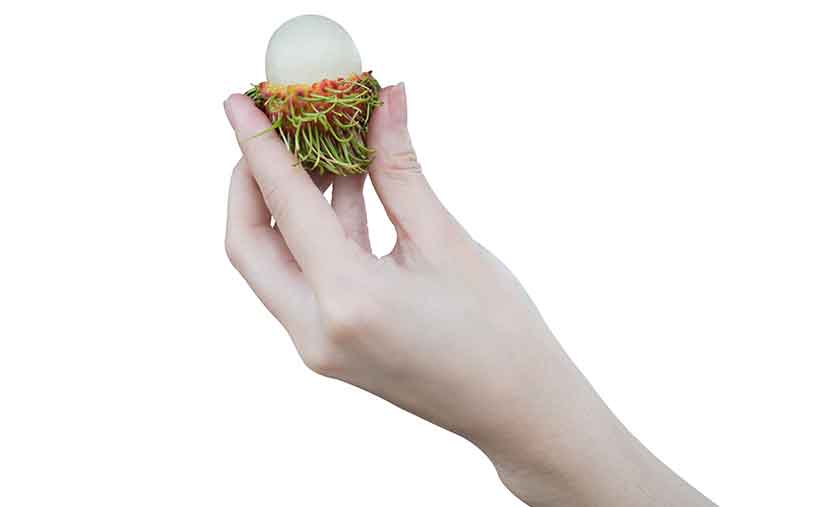
When someone is handed a prickly rambutan fruit for the first time, they could be forgiven for wondering how they are supposed to eat it.
Despite its thick and spiky exterior, the process is fairly straightforward:
- Firstly, the skin needs piercing with either a sharp nail or a knife.
- After making a small tear in the prickly skin, tear the fruit apart and peel one side off.
- Next, squeeze the base of the fruit between the forefinger and thumb and the inner flesh will pop out.
- Rambutan comes in two varieties, like many fruits with large seeds (such as peach, rambutan, plum etc). You can either have a ‘clingstone’ or a ‘freestone’ fruit. If it’s a clingstone, then you will need to eat around the stone since it is very difficult to separate.
- On the other hand, with a freestone variety, then you can easily remove the seed and just eat the flesh.
Aside from eating the fruit whole, you can also incorporate it into smoothies or chop it into pieces to add to salads.
What Does Rambutan Taste Like?
If you’ve had the chance to taste lychee, which is relatively more common, you’ll have some sense of what rambutan tastes like. However, while these two tropical fruits share a similar flavor profile, rambutan tends to be richer, sweeter, and juicier.
For those who haven’t experienced either fruit, then perhaps the taste could be described as sweet and creamy, with a subtle sour note from its citric and malic acid content. Moreover, the fruit boasts a mild, flowery aroma.
Like many tropical fruits, rambutan is excellent for hydration due to its high water content.
To be precise, it consists of 79.5% water.
Where Can You Find Rambutan?
Depending on your location, you might come across fresh imported rambutan in your local grocery store/ or supermarket.
However, its availability will likely be limited and depend on seasonal availability.
Beyond conventional grocery stores, you may find rambutan fruit in stores with a focus on the following:
- Speciality fruit stores
- Imported food/fruit stores
- Stores specializing in South-East Asian foods
Canned and frozen rambutan products are usually easier to locate.
Additionally, a range of rambutan products, including fresh fruit, can be found online.
Nutritional Comparison: Rambutan vs Longan Fruit and Lychee
As they share a similar appearance and tropical origin, let’s compare the nutritional profiles of rambutan, longan fruit, and lychee.
The table below displays the basic nutritional composition of these three fruits, along with their vitamin C content, per 100 grams (7, 34, 35).
| Nutrient | Longan Fruit | Lychee | Rambutan |
|---|---|---|---|
| Calories | 60 kcal | 66 kcal | 75 kcal |
| Carbohydrates | 15.1 g | 16.5 g | 18.50 g |
| Fiber | 1.1 g | 1.3 g | 2.8 g |
| Sugars | 14.0 g | 15.2 g | 15.7 g |
| Fat | 0.1 g | 0.44 g | 0.40 g |
| Protein | 1.31 g | 0.83 g | 1.0 g |
| Vitamin C | 84 mg | 71.5 mg | 70 mg |
As the table indicates, rambutan exhibits a slightly higher carbohydrate and calorie content compared to longan fruit and lychee.
Although all three fruits are rich in vitamin C, rambutan contains slightly less of it than longan and lychee.
In contrast, rambutan boats over double the fiber content of both longan and lychee.
Commonly Asked Questions
Finally, here are some answers to frequently asked questions about rambutan fruit.
The easiest way to determine the ripeness of a rambutan fruit is by examining its skin and checking its texture. Firstly, a ripe rambutan will be bright red, while green or yellow hues indicate the fruit is still immature. Secondly, when you squeeze the fruit, it should feel firm but give way slightly. If the fruit is extremely hard, it is not yet ripe.
Rambutan fruit are typically in season in the late spring and fall. However, this will vary depending on the region. In some regions, the rambutan trees will fruit only once per year and in others twice per year. According to the International Tropical Fruits Network, the fruit generally has two seasons in Malaysia and Thailand, firstly in June, and secondly in December. In the Philippines, the rambutan fruit is in season between July and October (36).
Rambutan can be stored at room temperature. However, storing them in the refrigerator will better preserve their freshness and extend their shelf life. At room temperature, the fruit should be ok for several days. When kept refrigerated, their shelf life can extend to approximately 10-15 days (37).
Final Thoughts
Rambutan fruit is juicy, refreshing, and it provides an enjoyable taste.
Its primary nutritional appeal lies in its high vitamin C content. However, it is worth noting that there are cheaper and more vitamin C-rich fruit options available.
For those who enjoy the distinctive taste of rambutan, it is a nutritious fruit choice that offers a wealth of vitamin C.
If you’re interested in learning more about tropical fruits, you can read this complete guide to star fruit.
Or delve into the world’s largest fruit – jackfruit.

